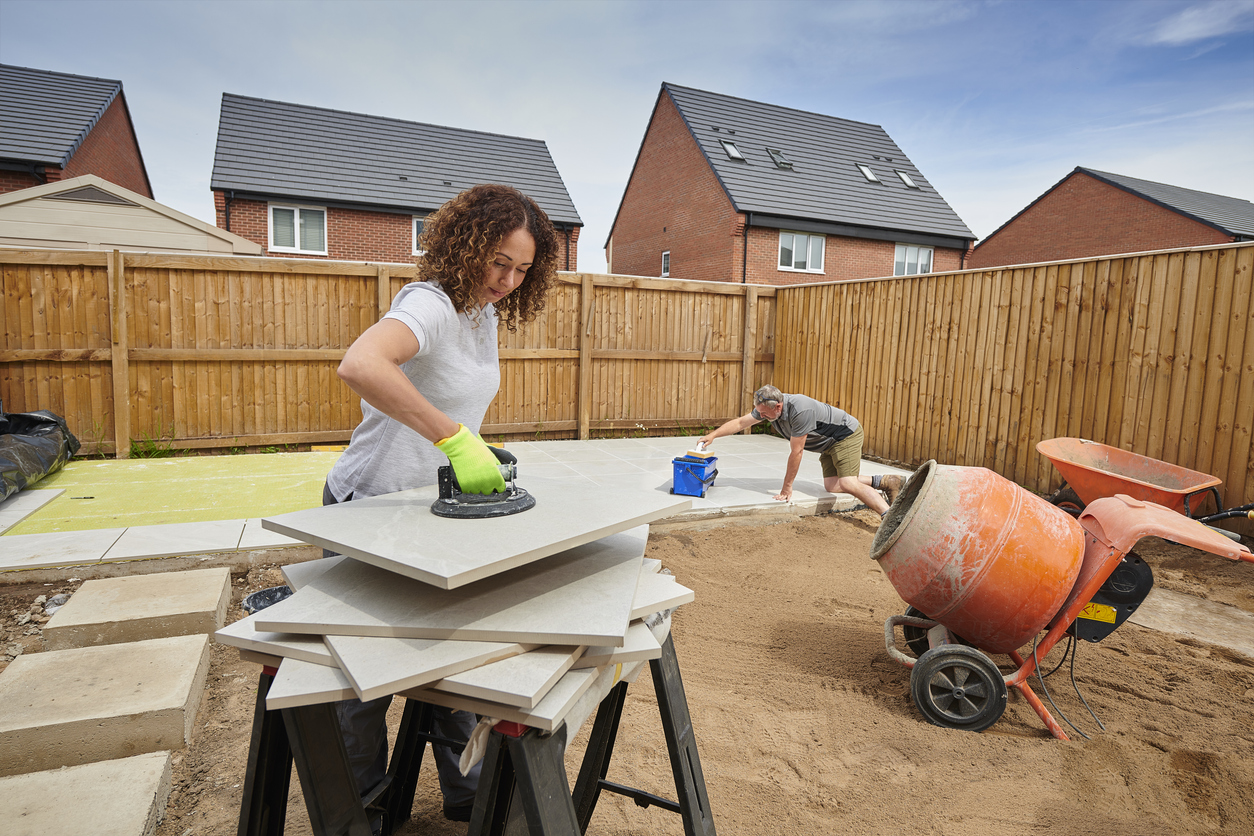
Key takeaways
-
If you are considering a home remodel that increases fair market value, it’s important to prioritize remodeling choices that appeal to a wider pool of potential buyers.
-
A remodel of your home’s exterior can provide a higher return on investment and may set your property apart from newer homes that lack large outdoor living spaces.
-
Cosmetic updates can improve the visual appearance of your home and potentially increase your bottom line when you sell.
-
Tapping into your home equity can be a good way to obtain funds for a remodeling project.
Recent research suggests that a total home renovation costs between $100,000 and $200,000, on average. Regardless of the size of your remodel budget, consider the goals of your project carefully. It can be helpful to look at return on investment for different projects, as well as remaining aware of common remodeling pitfalls.
Identify the Objective of Your Home Remodeling Project
Most home remodeling projects should be made with forethought and careful consideration of your goals and finances. When making home remodel decisions, at least one of the following motives is usually at play.
-
You may be looking to make changes that update a forever home with your personal style and preferences.
-
You may be thinking about remodeling as a means of increasing your home’s appeal and value prior to putting it on the market.
Finding cost-effective ways to remodel should be a high priority for maximizing the return on your investment. Your purpose for home remodeling may also impact the financing method that makes the most sense. For example, a home equity agreement (HEA) may be a good fit.
General principles for home remodeling to increase resale value
When remodeling your home with a hope to increase its value for resale, you should keep a few principles in mind as you select the areas for improvement and choose finishes. For instance, understand how your home’s features and market translate to prospective buyers. In other words, think about the buyer during the remodeling process. That may mean:
-
Sticking with neutral colors for paint and appliances
-
Avoiding gaudy, outdated, or overly stylized finishes (e.g., light fixtures, carpet, flooring)
-
Adding fixtures that are hard to remove or replace
Use Home Equity to Remodel Your Home’s Interior
Paying for a home remodeling project with funds from a home equity loan, home equity line of credit, home equity agreement or cash-out refinance can be effective.
Two likely candidates for using home equity to remodel the interior of your house are the kitchen and bathroom areas. If a homeowner is considering these projects as a way to potentially increase market value, keep the following in mind.
-
Avoid dark colors in small kitchens and bathrooms, in order to give the space a larger appearance.
-
Install plenty of electrical outlets.
-
Don’t decrease the total amount of storage and shelving.
-
Prioritize function and layout of the space over the style or appearance.

Exterior Home Remodel Options Using Your Home Equity
The outside of the home is often the first thing potential homebuyers notice. Depending on the area and market, improving your home’s curb appeal can often provide a solid return on investment. Popular exterior elements to refurbish the outside of your home may include:
-
Replacing the garage door
-
Adding a deck
-
Updating the entry door
-
Adding stone veneer
-
Landscaping
Back yards and large outdoor living spaces can be difficult to find in newer homes. You can draw interest to your home by updating its exterior with elegant and functional improvements.
Cost-Effective Ideas for Home Improvement
Major remodeling of your home can be expensive and time-consuming because of cost of goods and the potential need to hire a contractor. As an alternative to completely redoing entire spaces in your home, you could consider some do-it-yourself projects that are cost-effective and relatively easy to do. These might include:
-
New lighting fixtures: recessed lighting and other modern designs improve the brightness and look of a space in your home at an affordable price. Where possible, consider adding lighting to your outdoor spaces, too.
-
Fresh paint: Adding a new coat of paint can significantly increase its appeal to a prospective buyer. You can also replace bright or dark painted rooms with lighter, neutral tones.
-
Updated hardware: Replacing worn doorknobs, light-switch plates and cabinet hardware is a small way to give your home a sleek, elevated look.
-
Flooring: Replacing old carpet or flooring may also give your property’s appearance and value an added boost. Consider new wood synthetics that provide the look and feel of hardwood flooring without the premium price tag.

Home Remodeling Projects to Avoid From a Value Perspective
Some home remodeling projects may sound like winners at first, but homeowners looking to increase value from a remodeling project should be cautious when considering the following. Many of these are very expensive, and involve unique or personal touches that your average prospective buyer may or may not find appealing.
-
Adding a swimming pool to the back yard
-
Combining bedrooms
-
Removing closets
-
Upgrading kitchens and bathrooms with high-end finishes
-
Making non-traditional choices in tiling or backsplash
-
Using wallpaper
-
Texturing wall or ceilings
-
Converting a bedroom to a home office or den
-
Turning your garage into an added living space or home gym
Complete Your Home Remodel Using Home Equity with a Home Equity Agreement
Home remodeling provides many benefits, both in improving the quality of your current living situation and potentially adding to your home’s fair market value. Tapping into your home equity through a home equity agreement (HEA) can be an effective way to complete your remodeling project.
In a HEA, a homeowners sells a portion of the equity in their home to the HEA provider in exchange for cash now. Because HEAs are not loans, homeowners are not taking on more debt. There are no monthly payments, interest rates or high credit score requirements. The income requirements are also more flexible than with debt-based products. With the proceeds of a HEA, homeowners can fund remodeling projects or large life purchases, and pay off high-interest debt.
Contact Unlock Technologies today to see what you can do with your home’s equity.
The blog articles published by Unlock Technologies are available for general informational purposes only. They are not legal or financial advice, and should not be used as a substitute for legal or financial advice from a licensed attorney, tax, or financial professional. Unlock does not endorse and is not responsible for any content, links, privacy policy, or security policy of any linked third-party websites.”


